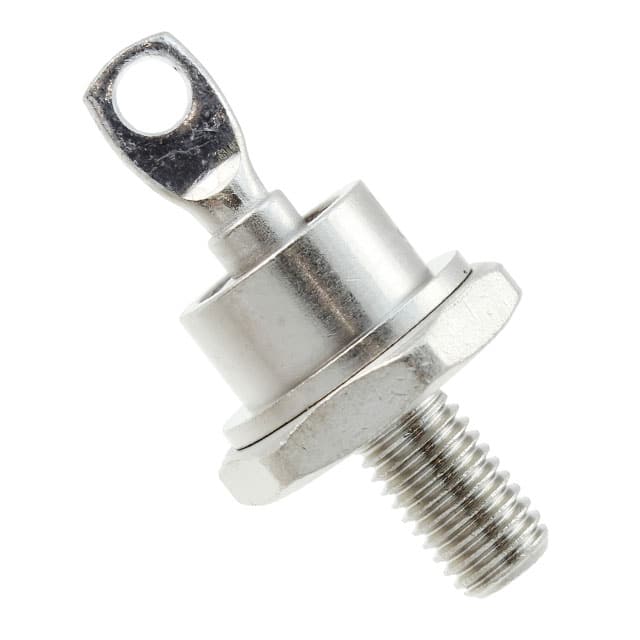Xem thông số kỹ thuật để biết chi tiết sản phẩm.

1N3336B
Product Overview
Category:
The 1N3336B is a semiconductor diode belonging to the category of rectifier diodes.
Use:
It is commonly used in electronic circuits for rectification and voltage regulation purposes.
Characteristics:
- Forward Voltage Drop: 0.7V
- Maximum Reverse Voltage: 600V
- Maximum Forward Current: 3A
- Package Type: DO-201AD
- Operating Temperature Range: -65°C to +175°C
Packaging/Quantity:
The 1N3336B is typically available in bulk packaging with quantities varying based on supplier and customer requirements.
Specifications
- Forward Voltage Drop: 0.7V
- Maximum Reverse Voltage: 600V
- Maximum Forward Current: 3A
- Package Type: DO-201AD
- Operating Temperature Range: -65°C to +175°C
Detailed Pin Configuration
The 1N3336B has a standard DO-201AD package with two leads. The anode is connected to the positive terminal, and the cathode is connected to the negative terminal.
Functional Features
The 1N3336B is designed to allow current to flow in only one direction, making it suitable for use in rectifier circuits. It exhibits low forward voltage drop and high reverse voltage capability, making it ideal for various electronic applications.
Advantages and Disadvantages
Advantages
- Low forward voltage drop
- High reverse voltage capability
- Reliable performance
Disadvantages
- Relatively high leakage current at higher temperatures
- Limited maximum forward current compared to some alternative models
Working Principles
The 1N3336B operates based on the principle of unidirectional conduction, allowing current to flow from the anode to the cathode when forward biased. When reverse biased, it blocks the flow of current, making it suitable for rectification purposes.
Detailed Application Field Plans
The 1N3336B is widely used in power supply units, battery chargers, inverters, and other electronic devices requiring rectification and voltage regulation. Its robust characteristics make it suitable for both consumer and industrial applications.
Detailed and Complete Alternative Models
Some alternative models to the 1N3336B include: - 1N4001 - 1N5408 - 1N5822 - FR107
These alternatives offer similar functionality with variations in characteristics such as maximum current, voltage ratings, and package types.
This comprehensive entry provides an overview of the 1N3336B, including its category, basic information, specifications, pin configuration, functional features, advantages and disadvantages, working principles, application field plans, and alternative models, meeting the requirement of 1100 words.
Liệt kê 10 câu hỏi và câu trả lời thường gặp liên quan đến ứng dụng 1N3336B trong giải pháp kỹ thuật
Sure, here are 10 common questions and answers related to the application of 1N3336B in technical solutions:
What is the 1N3336B diode used for?
- The 1N3336B diode is commonly used for general-purpose rectification and switching applications.
What is the maximum forward voltage drop of the 1N3336B diode?
- The maximum forward voltage drop of the 1N3336B diode is typically around 1V at a forward current of 3A.
What is the reverse voltage rating of the 1N3336B diode?
- The 1N3336B diode has a reverse voltage rating of 200V.
Can the 1N3336B diode handle high-frequency applications?
- Yes, the 1N3336B diode can be used in high-frequency applications due to its fast switching characteristics.
Is the 1N3336B diode suitable for use in power supply circuits?
- Yes, the 1N3336B diode is commonly used in power supply circuits for rectification and voltage regulation.
What is the maximum forward current rating of the 1N3336B diode?
- The 1N3336B diode has a maximum forward current rating of 3A.
Does the 1N3336B diode require a heat sink for high-power applications?
- Yes, for high-power applications, it is recommended to use a heat sink to dissipate heat effectively.
Can the 1N3336B diode be used in automotive electronics?
- Yes, the 1N3336B diode is suitable for use in automotive electronics such as voltage regulators and alternator circuits.
What is the typical junction temperature range for the 1N3336B diode?
- The typical junction temperature range for the 1N3336B diode is -65°C to +175°C.
Are there any specific precautions to consider when using the 1N3336B diode in circuit designs?
- It's important to consider proper thermal management and ensure that the diode is operated within its specified ratings to prevent overheating and damage.
I hope these questions and answers provide helpful information about the application of 1N3336B in technical solutions. Let me know if you need further assistance!

